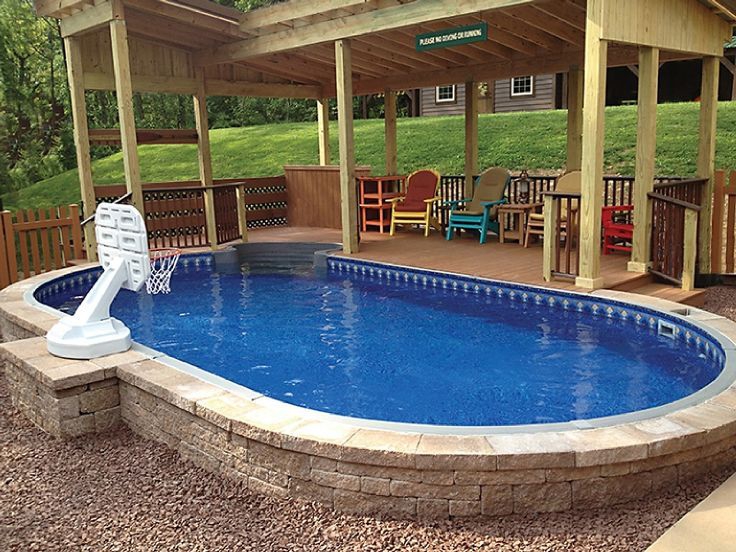When it comes to designing your dream backyard oasis, swimming pools are often at the top of the list. While traditional inground and above-ground pools each have their merits, there's an innovative option gaining popularity—partially inground swimming pools. These hybrid pools offer the best of both worlds, combining aesthetics, functionality, and cost-effectiveness. Let’s dive into what makes them so appealing and why they might be the perfect fit for your outdoor space.
What Are Partially Inground Swimming Pools?
As the name suggests, partially inground swimming pools are installed with part of the pool above ground and part of it buried below the surface. This design bridges the gap between fully inground and above-ground pools, providing a unique aesthetic and practical advantages. They’re versatile, allowing homeowners to customize the depth, shape, and material to suit their needs and preferences.
Key Features
-
Hybrid Installation: Combines elements of inground and above-ground pool designs.
-
Customizable Depths: Ideal for sloped yards or uneven terrain.
-
Durable Materials: Often made from concrete, fiberglass, or steel-reinforced walls.
Benefits of Partially Inground Pools
Choosing a partially inground pool comes with numerous benefits that make them an attractive option for homeowners.
1. Cost-Effective Solution
Compared to fully inground pools, partially inground pools are more budget-friendly. They require less excavation, which reduces labor and material costs while still providing a sleek, modern look.
2. Aesthetic Appeal
Partially inground pools can be designed to blend seamlessly with your landscaping. They’re perfect for creating an infinity pool effect or adding decorative decking, stone walls, or other features that elevate the overall look of your backyard.
3. Versatility in Terrain
One of the biggest challenges for many homeowners is dealing with uneven or sloped yards. Partially inground pools excel in such situations, as they can be tailored to fit the terrain without the need for extensive grading or leveling.
4. Easier Maintenance
These pools are easier to access than fully inground pools, making cleaning and maintenance tasks more straightforward. Additionally, the exposed sides can house integrated storage or equipment compartments.
5. Improved Safety
The elevated edges of a partially inground pool act as natural barriers, reducing the risk of accidental falls. For families with young children or pets, this added safety feature is invaluable.
Design Options for Partially Inground Pools
One of the standout features of partially inground pools is their design flexibility. Here are some popular design ideas to inspire your project:
1. Multi-Level Decking
Pair your pool with multi-level decks to create a luxurious and functional space. Decking can double as lounging areas and enhance the pool’s aesthetic appeal.
2. Infinity Edge
For a dramatic and sophisticated look, consider adding an infinity edge. This feature works exceptionally well in sloped terrains and offers breathtaking views.
3. Natural Stone Walls
Surrounding your partially inground pool with stone walls can give it a rustic, resort-like appearance. Stone walls also provide additional structural support.
4. LED Lighting
Enhance the ambiance with LED lighting. From underwater lights to perimeter accents, lighting can transform your pool area into a magical nighttime retreat.
Materials Used in Partially Inground Pools
The choice of materials significantly impacts the durability, aesthetics, and cost of your pool. Here are the most common materials used for partially inground pools:
1. Fiberglass
Fiberglass pools are pre-fabricated and come in a variety of shapes and sizes. They’re durable, low-maintenance, and quick to install.
2. Concrete
Concrete pools offer unmatched customization but require more time and investment to build. They’re ideal for unique shapes and designs.
3. Steel-Reinforced Walls
Steel walls provide excellent strength and durability. They’re often paired with vinyl liners for a smooth finish and added protection.
Installation Process
Installing a partially inground pool involves several key steps:
-
Site Assessment and Design: Professionals evaluate your yard’s terrain and recommend the best design options.
-
Excavation: The area is partially excavated to create the desired depth and shape.
-
Installation of Pool Structure: Depending on the material, the pool walls or shell are installed.
-
Backfilling and Leveling: The area around the pool is backfilled to provide support and stability.
-
Finishing Touches: Decking, landscaping, and additional features are added to complete the project.
Cost Considerations
While partially inground pools are generally more affordable than fully inground pools, several factors can influence the total cost:
-
Size and Shape: Larger pools or complex designs will cost more.
-
Materials: Fiberglass is cost-effective, while concrete offers premium customization.
-
Landscaping: Adding decks, patios, or decorative features increases the budget.
-
Permits and Regulations: Ensure you account for local building permits and inspections.
Maintenance Tips
To keep your partially inground pool in top condition, follow these maintenance tips:
-
Regular Cleaning: Skim the surface, vacuum the bottom, and clean the walls.
-
Chemical Balance: Test and adjust water chemistry weekly to prevent algae growth.
-
Inspect Components: Check the pump, filter, and other equipment for proper functioning.
-
Seasonal Care: Winterize your pool if you live in a region with freezing temperatures.
Conclusion
Partially inground swimming pools are an excellent choice for homeowners seeking a balance of style, functionality, and affordability. With endless customization options and practical benefits, they’re a worthy investment that can transform your outdoor space into a personal retreat. Whether you’re working with a challenging terrain or aiming for a unique design, partially inground pools offer a solution tailored to your needs. Start planning today and enjoy the perfect middle ground in pool design!




